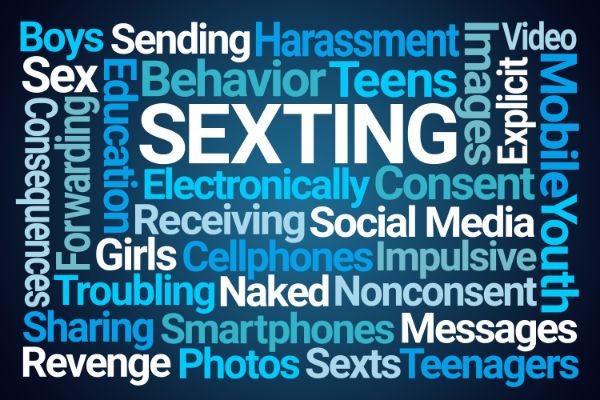The report examines different types of sexting and their prevalence, as well as emotional responses.
It draws on findings from the latest EU Kids Online survey conducted in 19 countries between 2017 and 2019. In this survey, 14,598 adolescents aged 12-17 answered questions about online sexual messages.
An average of 22% of all young people report receiving sexual messages during the past year. 6% report sending or posting sexts themselves. Almost 4% requested sexual information from others. 13% were asked for sexual information about themselves when they did not want to reply to these requests.
Active sexting
Youth who engage in active sexting (i.e., exchanges where young people initiate the communication, by sending, requesting, or posting sexts online) live in less positive home and school environments, but tend to find online spaces safer for connection and expression (including sexual communication).
Speaking about the report, Dr. Barbovschi notes:
Feelings of safety in one's family and school environment, and online, are important factors in the context of sexting. Those who feel less safe at home and in their schools, turn to the internet to find spaces where they can express themselves in a safe way. However, these online spaces might not always address their needs.
Unwanted sexual messages
The report shows that recipients of unwanted sexual messages tend to be girls, older, and display a preference for online communication. They are also more likely to experience cyber-victimisation, report more sensation-seeking, feel less safe in their homes and online, and have more emotional symptoms.
Dr. Barbovschi therefore suggests that receiving unwanted sexual messages is not an isolated online problem and may be associated with an increased risk of exposure to other forms of victimization. She notes:
Practitioners working with adolescents should acknowledge the existence of both pleasant, consensual sexual communication, and of unwanted sexual requests. It is important to probe the possible co-occurrence of the latter with other negative online experiences. Where necessary, plans should be developed to reduce adolescents´ vulnerability and tendency to become targets of disrespectful behaviour online.
Policy recommendations
The authors propose that relevant sexual education is needed to ensure that young people develop skills, including critical and informed responses to sexualized digital communication. They recommend steering away from education about sexting that is grounded in fear. School-based sexual education should instead be expanded to include issues of sexuality, privacy and consent related to existing practices of sexting.
The report should be of interest to researchers, policy makers and other stakeholders interested in advancing sexual education informed by research evidence that is grounded in young people's experiences. It brings together the expertise of 10 researchers closely involved in the EU Kids Online study with various backgrounds in media, communication and internet studies, gender, sociology, and psychology, all with a focus on the experiences of children and young people. It therefore offers a balanced and nuanced approach to the topic of sexual communication among youth.
Contact
- Dr. Monica Barbovschi
- Professor Elisabeth Staksrud
